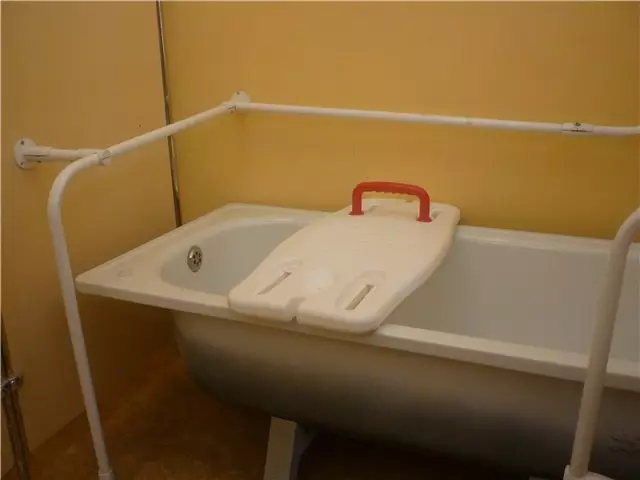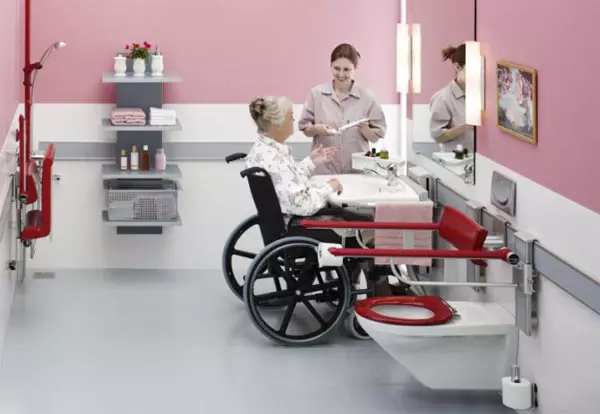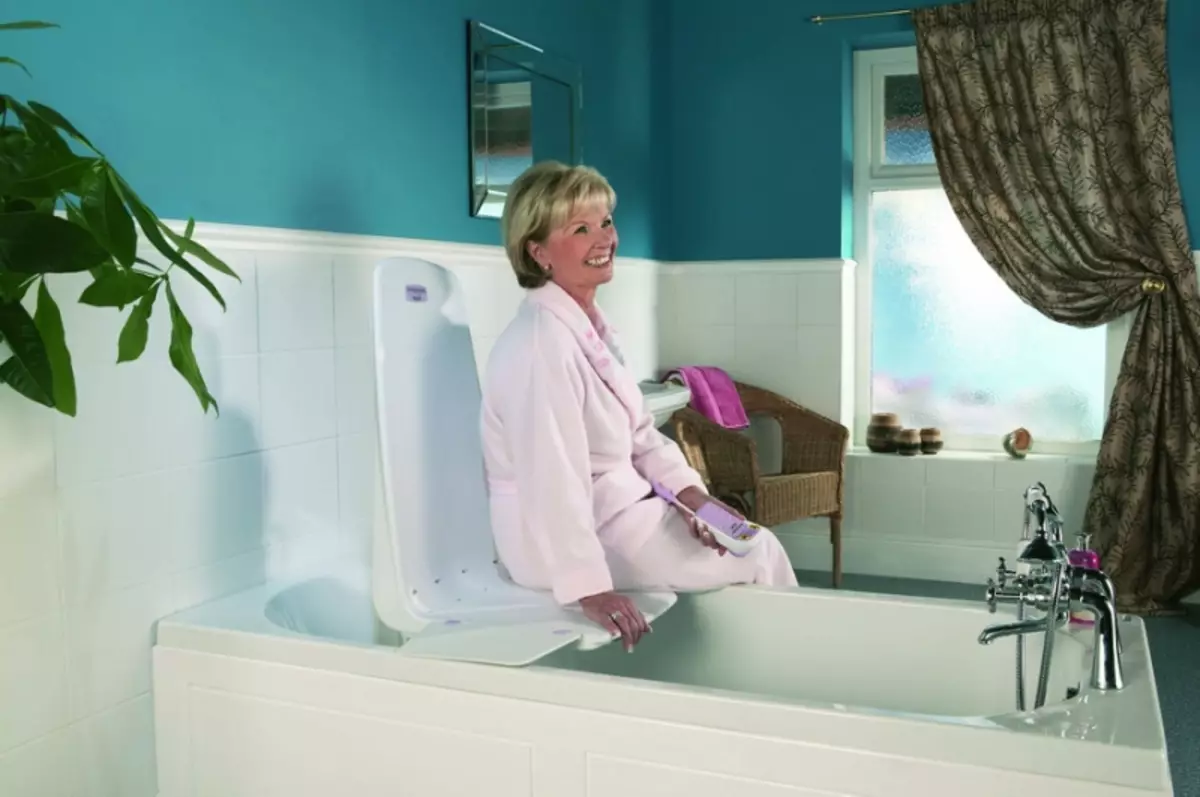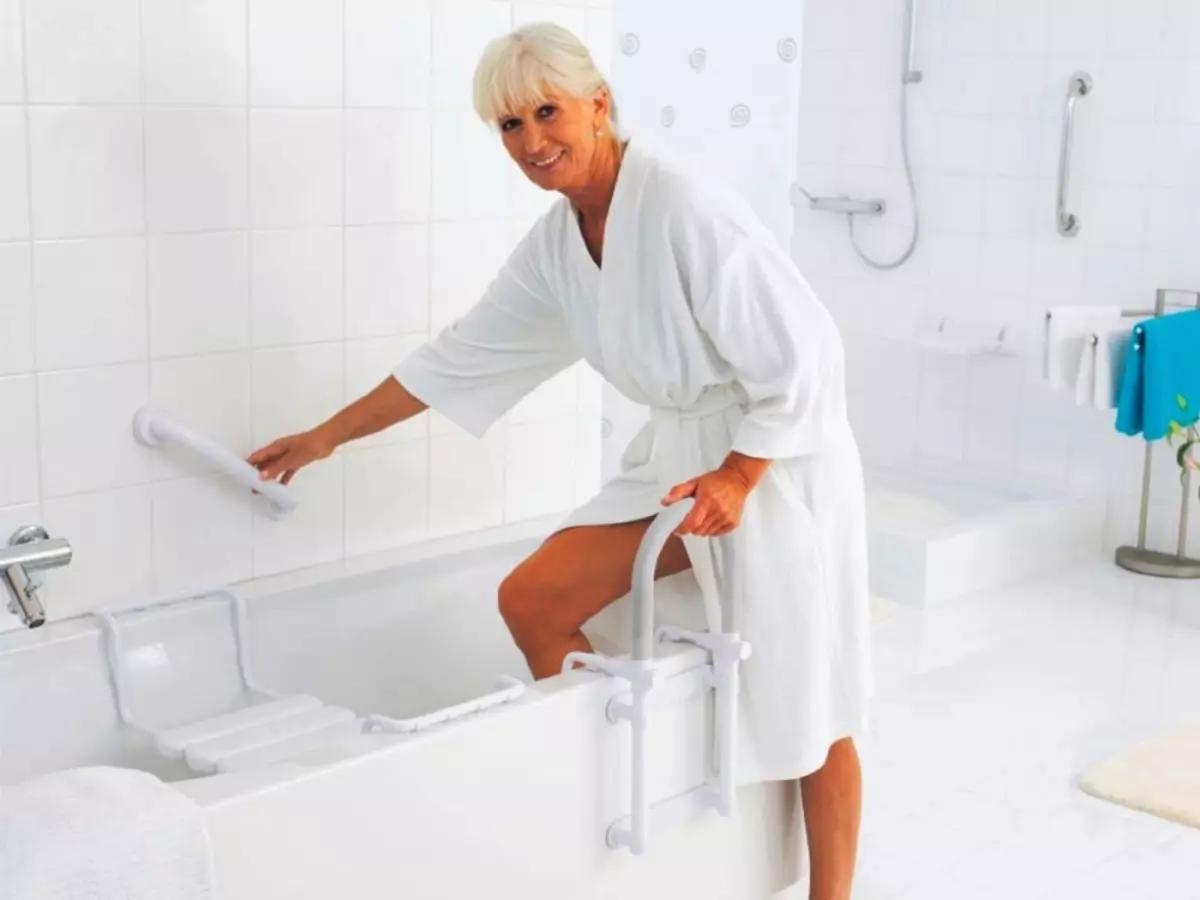
Life of people with disabilities is significantly different from the life of a healthy person. When we talk about creating special conditions for the disabled, we usually mean the creation of special ramps, the installation of handrails and elevators for people with disabilities.
To facilitate the process of using any room, installing special handrails and other auxiliary devices exists everywhere, paramount importance they have in the bathroom and toilet.
The presence of handrails in sanitary premises is most reasonable in terms of safety, because even an absolutely healthy person may slip on the wet floor, not to mention people with the problems of the musculoskeletal system.
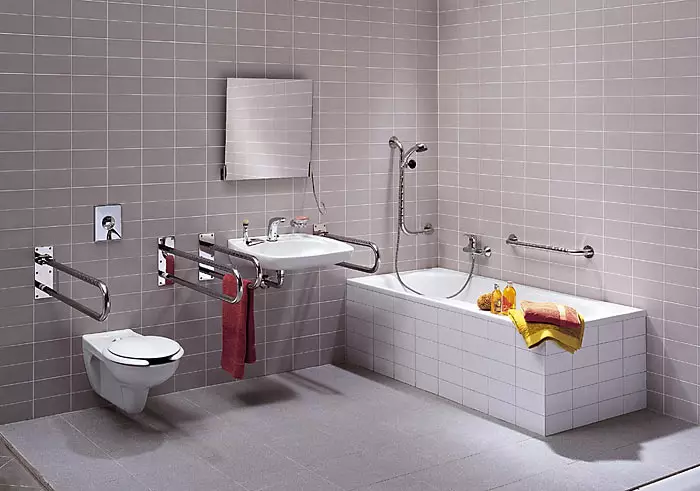
Previously, such orders could be found only in specialized medical institutions. In their free sale it was difficult to find, and if some models could have been getting "according to Blatu", then they appeared outwardly rather reminded to the instrument of torture. At the moment, finding any handrails and attachments for people with disabilities is not difficult. At the same time, you have the opportunity to choose from several design solutions depending on what style your bath or bathroom is performed.
Security conditions
Security is a key criterion for choosing disabled handrails. It is necessary to thoroughly consider and calculate each movement that a person with disabilities will have to do to make one or another procedure.
In addition, make sure that water in the bathroom does not fall into the bathroom and it was not slippery - if a person with disabilities slipped on a wet floor, it can lead to even more serious injury and complications. Hang a special curtain for the bathroom, as well as use special rubber stickers or rugs in the bath itself. Preferred rough floor tiles or also use a variety of bathroom mats.
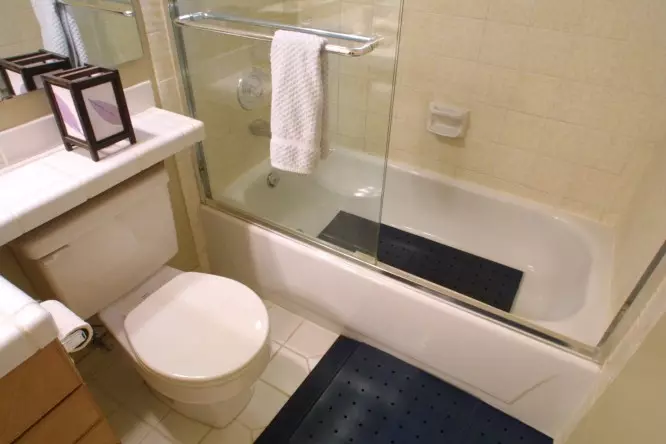
In addition to the handrail, the safety of water procedures will help to provide special steps for the bathroom, a resetting board and various seats. All these devices are not canceled, but only complement the use of handrails.
Article on the topic: Plastering of door slopes: Stages of work
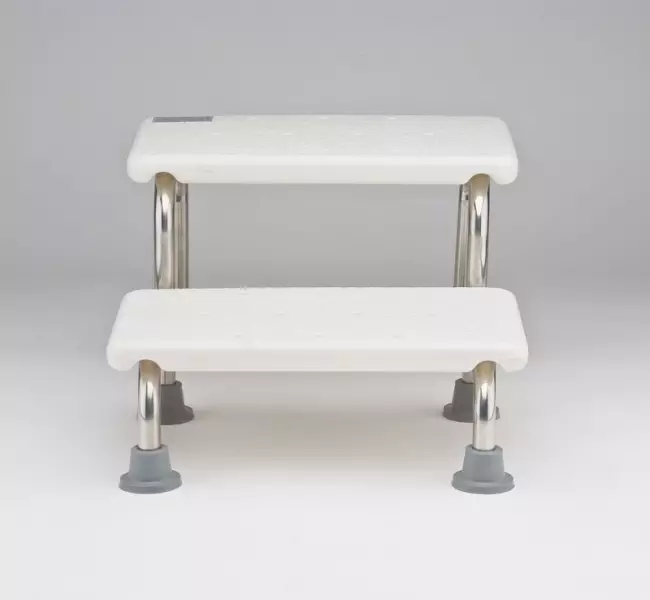
Recommendations for choosing
- One of the most important points that should be considered when choosing the handrail - the load on which they are calculated. It is necessary to carefully examine the technical characteristics and consult with the store consultants about the permissible load. It takes into account the growth, weight and physical abilities of the disabled person.
- The number of handrails and their installation is carried out taking into account the size of the room - They should not interfere with the free movement of man. Let special devices be less, but they will be located in the right places. If there are few places in the bathroom or toilet, install special handles, corner structures or purchase a non-stationary multifunctional vacuum charger.
- If the patient suffers from arthritis, it is better to give preference to curved structures that allow you to reduce the load on the hand of hand, transferring it to the forearm.
- When choosing handrails, consider how good the patient's vision. If we are talking about the elderly man with weak vision, give preference to color handrails.

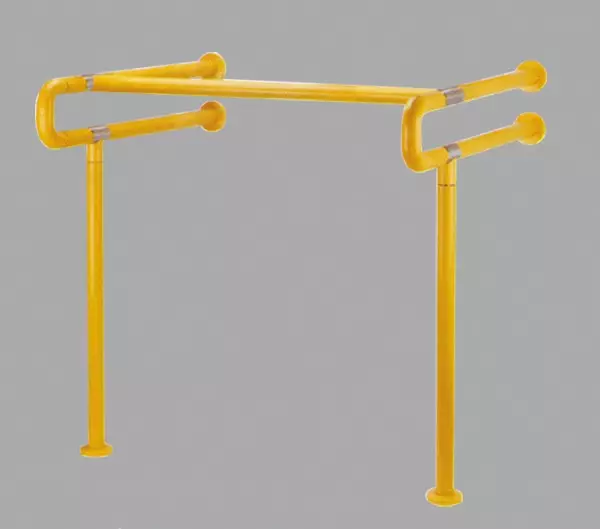
Requirements
Naturally, to handrails in bathrooms for disabled people Special requirements:
- First of all - this The strength of the handrails themselves and their fixtures. It is better if you have a significant stock of the strength of the product in the calculation of the largest member of your family. After all, it is possible that other family members will be used by handrails. The maximum allowable load of the wheelchair is an average of 120-150 kg.
- Material for handrails should be moisture resistant (As a rule, preference is given to chromed stainless steel) and durable.
- Depending on the individual characteristics of the patient, the handrails must have a certain form. (straight or g-shaped) and stops.
- If we are talking about wall handrails, then They are recommended to be attached to the bearing wall..
- Install the handrails taking into account the growth of the patient - As a rule, horizontal handrails are placed at an altitude of 70-100 cm from the floor.
- Handrails need to be placed regularly and disinfect.
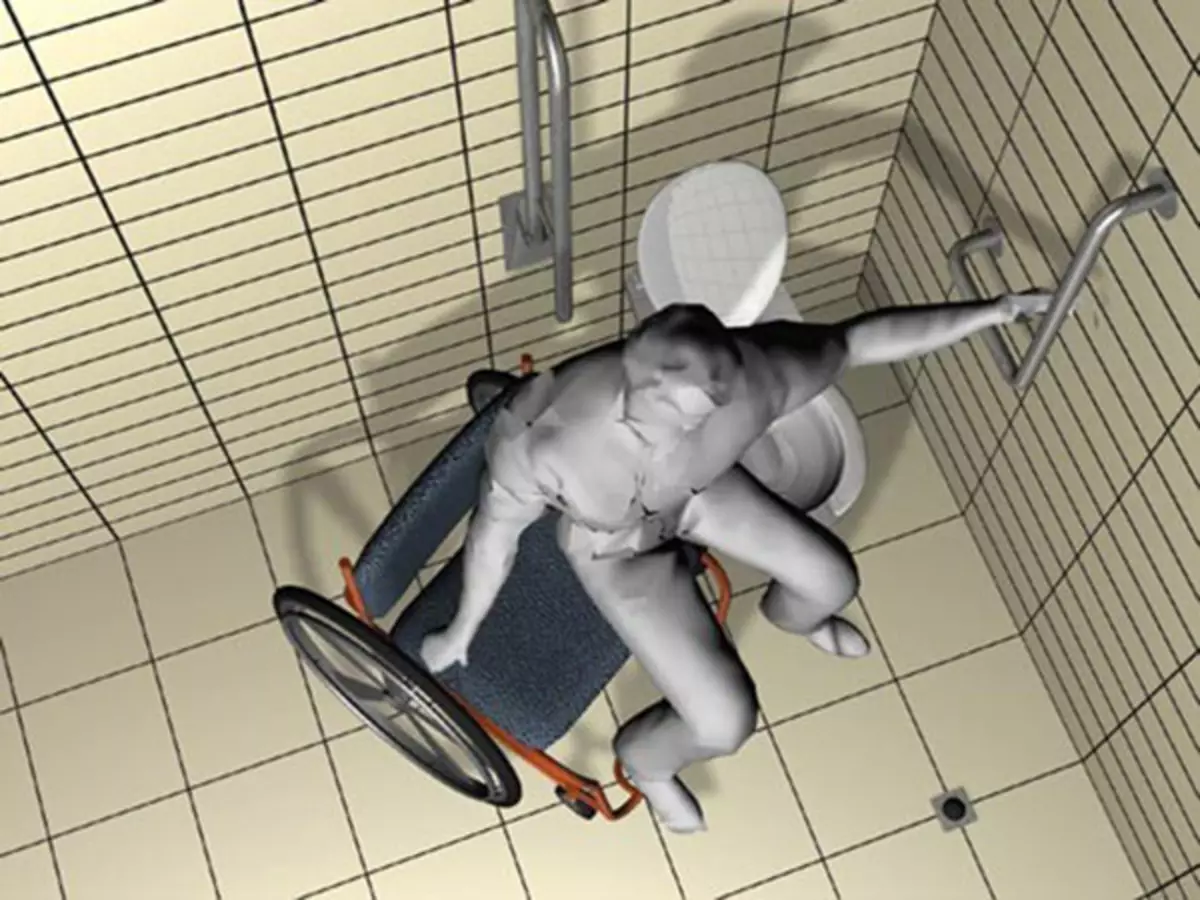
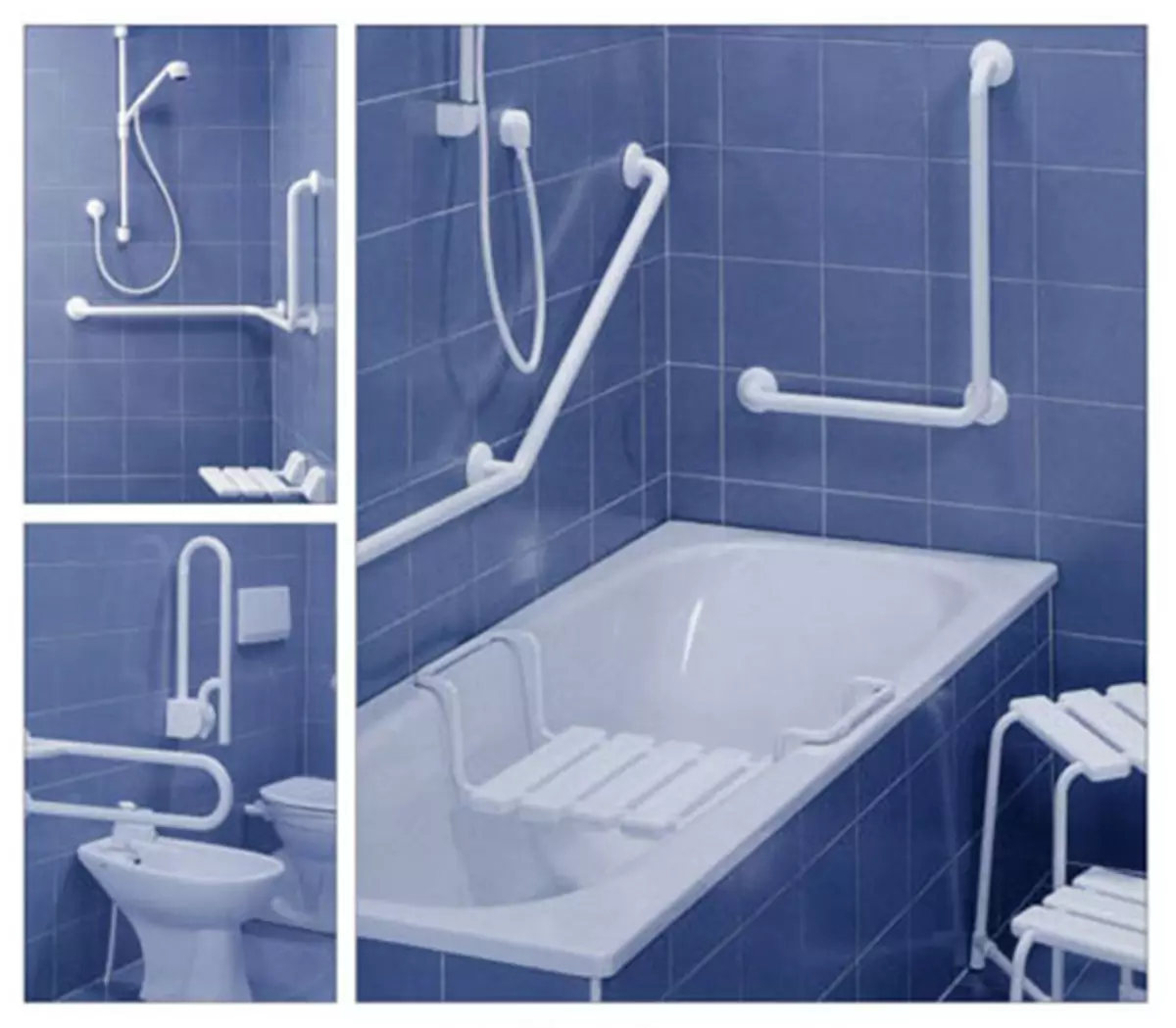
Standard equipment
The handrails can be sold with fasteners and without them. If the handrail is sold together with fasteners, then it is usually supplied with it:- self-tapping screw;
- Dowel;
- Magnets for fixing the handrail;
- screws;
- Anchors;
- brackets;
- hinges;
- crosses;
- flanges;
- Plugs, etc.
Article on the topic: Waterproof dotted lamps for the bathroom
Types and materials
Special devices for people with disabilities in the bathrooms are sliding, stationary and folding.
The most common types of holders and handrails:
- Wall corner In order to make it easier to rise and go down to the bath.
- For sink radius or straight form - For the support of people with disabilities during hand washing.
- Folding , in the form of a turnstile with special hand supports.
- Wallpoints - facilitate the process of moving around the room
- Portable , with a vacuum fastening system.
There are stylish handrails that add sophistication to your interior.
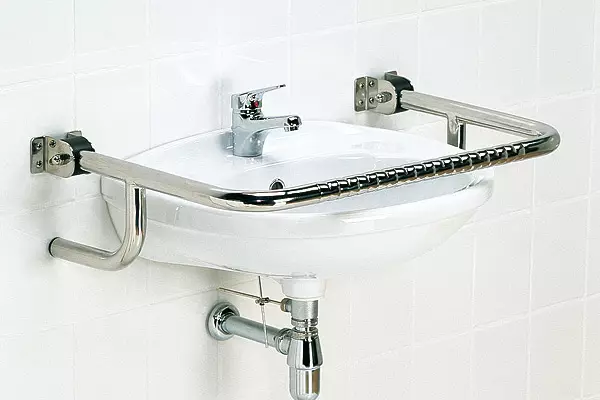
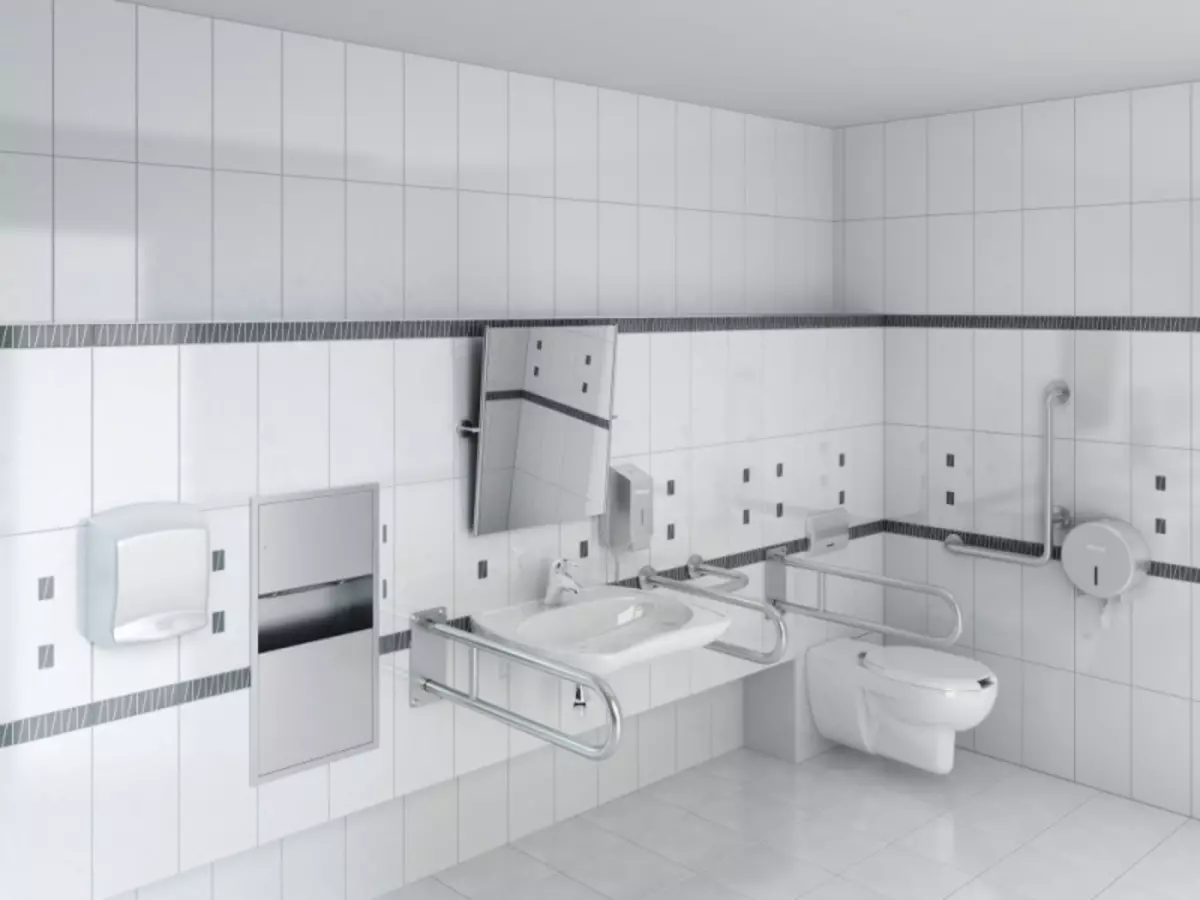
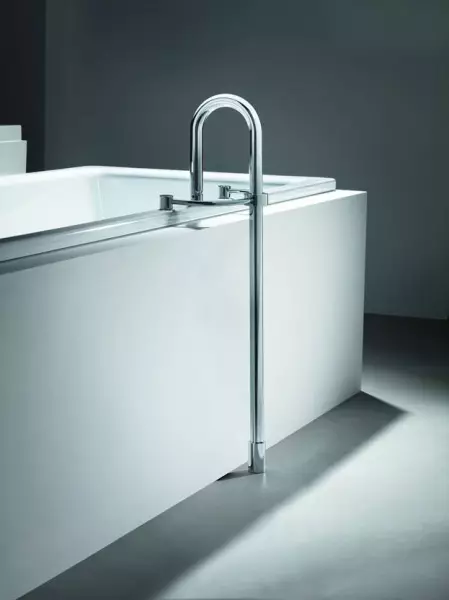
Installation in bathrooms
- Initially, the size of the room should be measured and calculated how much handrails will be required, what is long and diameter, in order for the patient to be convenient to perform any actions and freely move around the room.
- Consider mounting sites - on the walls, on the floor or on the ceiling, it will be more convenient to fix certain designs.
- Before starting to fasten the handrails into place, make marking and count about how they will be located: so you can make sure that they are safe and do not constrain movements and do not interfere with moving around the room.
- Do openings for fastening the corresponding diameter and depths.
- Insert the dowel into the hole.
- Attach the flanges of the handrail and firmly fix it with a mounting element from the kit.
- Put the plug on top.
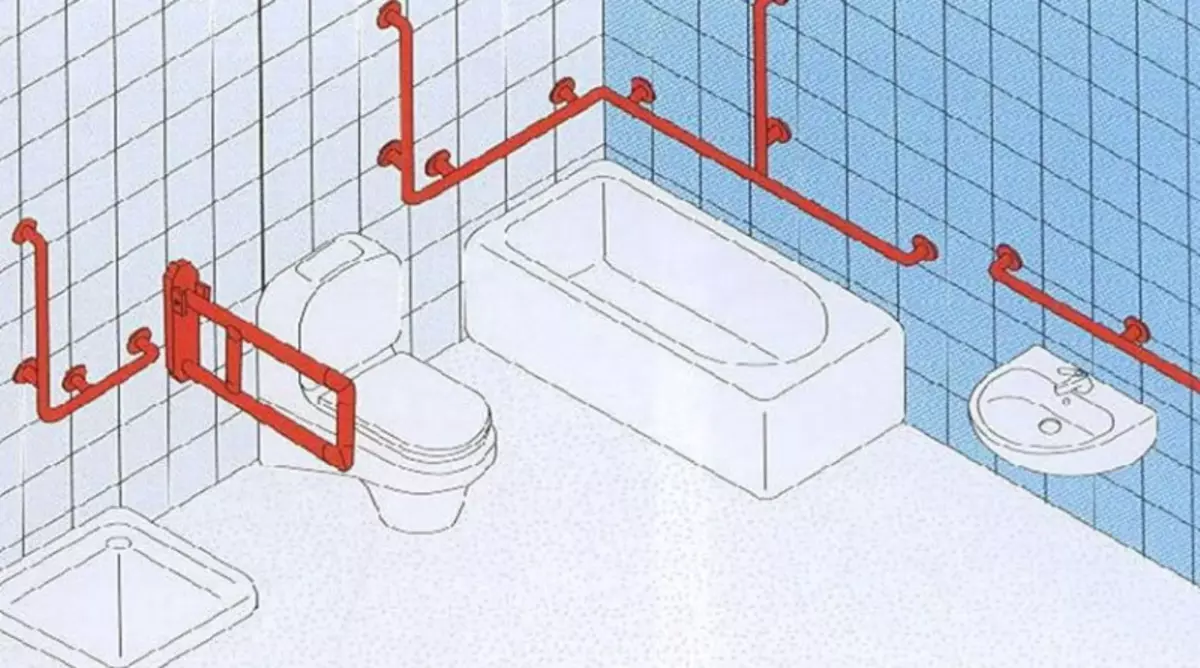
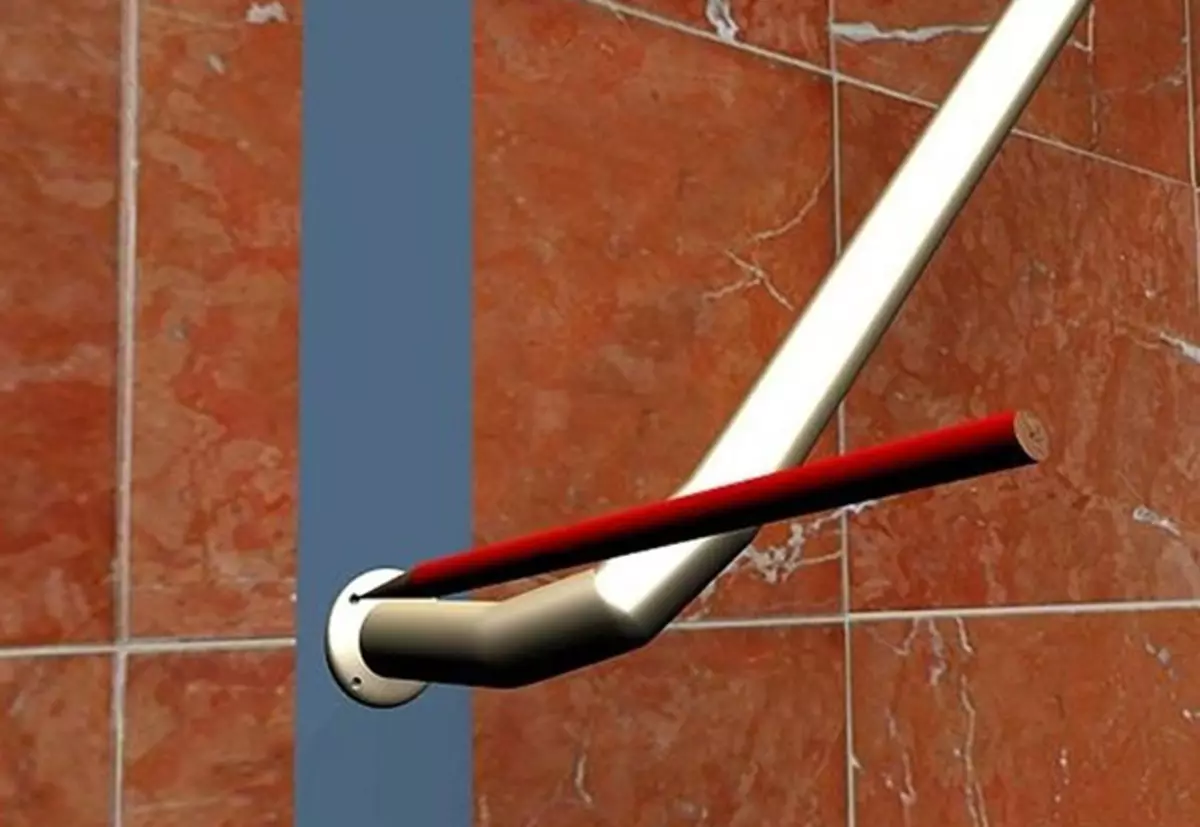
There is also a special type of handrail, which is attached to the wall with vacuum suckers. In this case, the color indicator on the bracket shows how dense the handrail is attached to the wall. However, remember that such plastic brackets withstand the load no more than 50 kg, and, accordingly, they cannot accept the weight of an adult. They should be used with caution.
Article on the topic: Home horizon do-it-yourself: drawings, schemes, photos
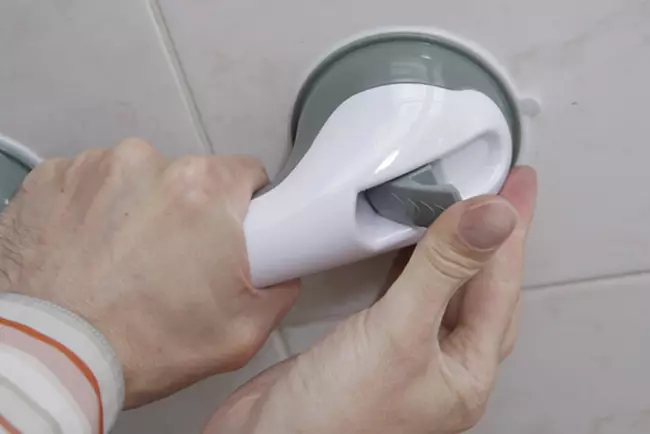
As mentioned above, most of the handrail are made of stainless chromed steel. Such material has several advantages: it is durable, not deformed during operation, moisture consists and often Covered with special antibacterial nylon.
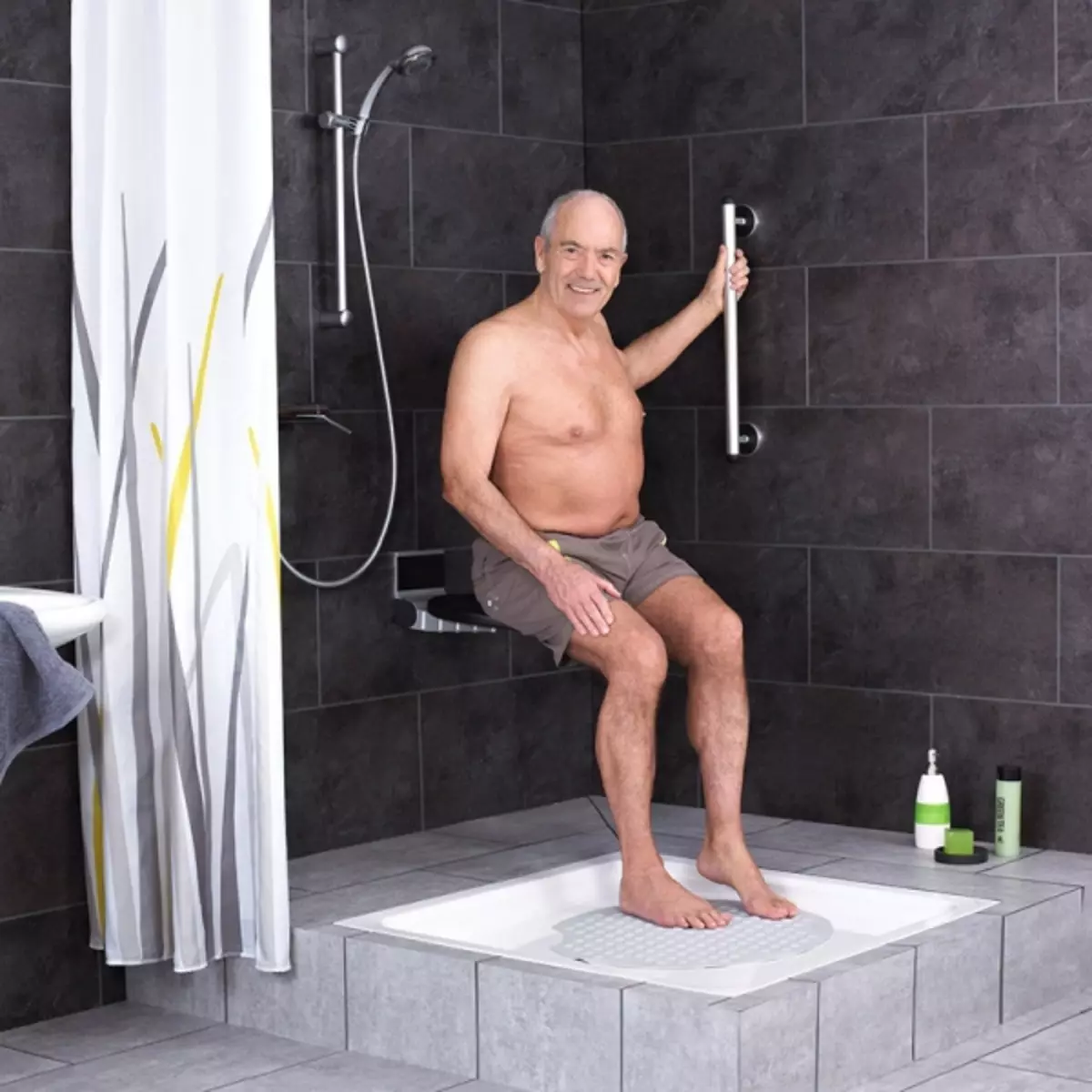
Wheelchair handrails can be made of hygienic plastic or even a tree. The surface of the handrail can be both smooth and corrugated. However, it should be noted that the latter is not suitable for people with sensitive skin.
Installation in toilets
The process of installing special holders in the toilet is not too different from the installation of wheelchair in the bathroom. In the toilet, the handrails are used primarily so that the patient is easier to sit down and climb from the toilet, and can also be placed around the perimeter of the room, facilitating the walking process.
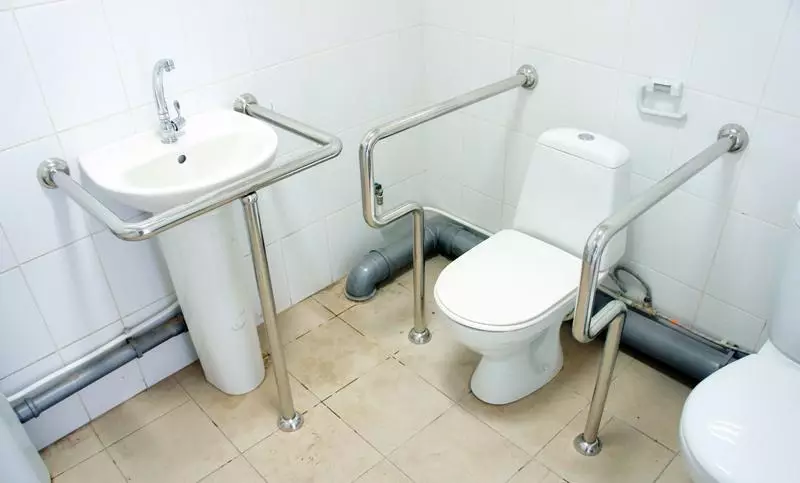
Handrails for the toilet should be strictly fixed and withstand the entire weight of the patient. The most reliable support handrails on the toilet. Such handrails can be attached to both both parties to the toilet to the floor and the wall.

However, folding handrails for the toilet can also be used in the toilet, which are leaving 90 degrees.
Other fittings for bathrooms
In addition to the handrail, other additional designs for disabled people can also be used in the bathroom.
- Special chairs and bathroom seats Allowed to take water procedures sitting both in the shower cabin and in the bathroom, which reduces the load on the legs.
- There are special baths originally equipped with a seat and a hermetic door with pens-supports.
- Shells for disabled They have the following modifications: they can adjust the angle or height of the tilt, which can be changed at their discretion, as well as they may have a horizontal connection of the siphon with drainage, due to which the possibility of close to drive up to the sink on a wheelchair appears.
- In Europe, have long been distributed Special toilets with folding armrests which are necessarily equipped with all public institutions. In Russia, they are still rarity.
- For those who do not have the ability to move independently, special suspended trapezoids have been developed and Special lifts.
